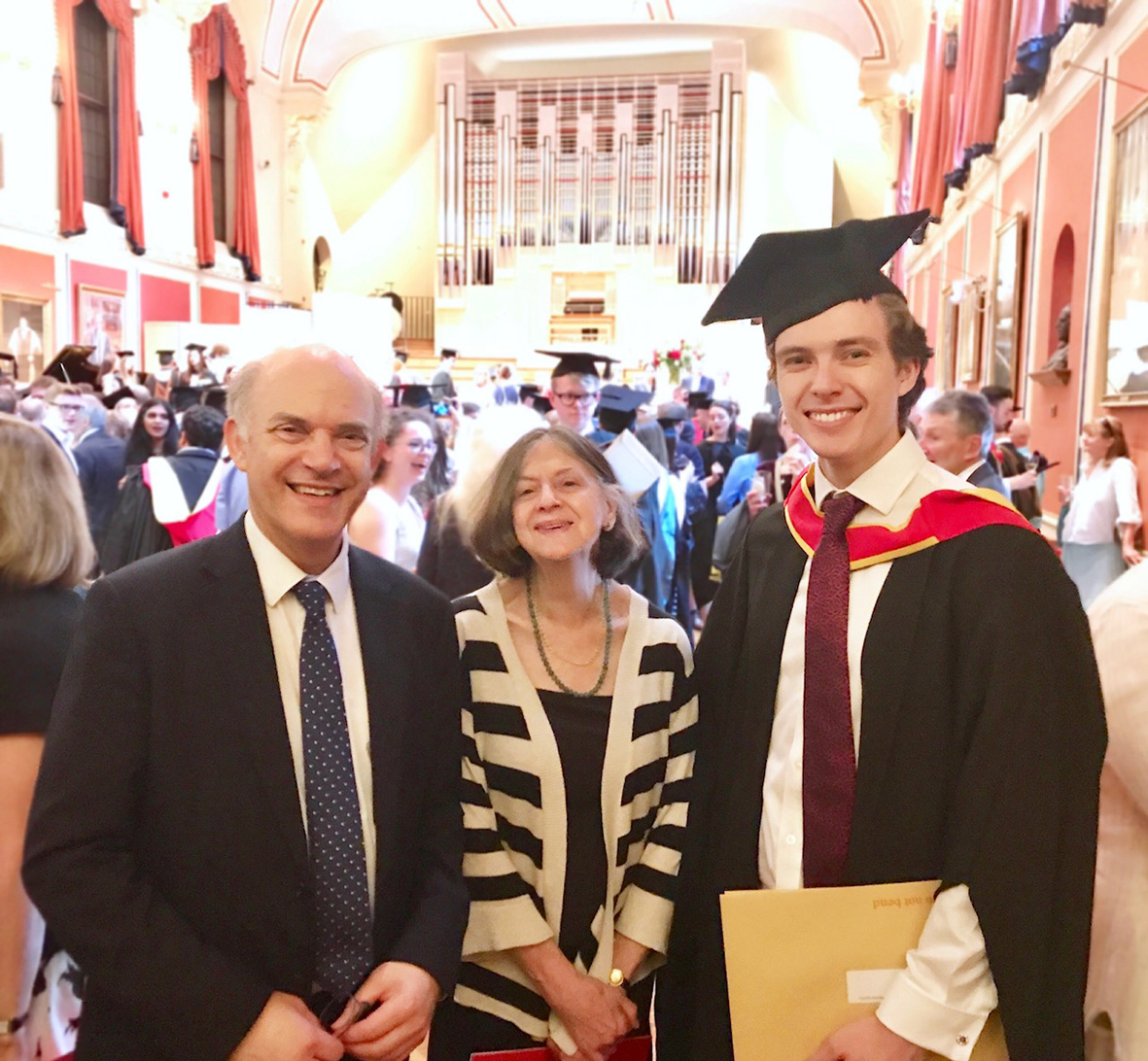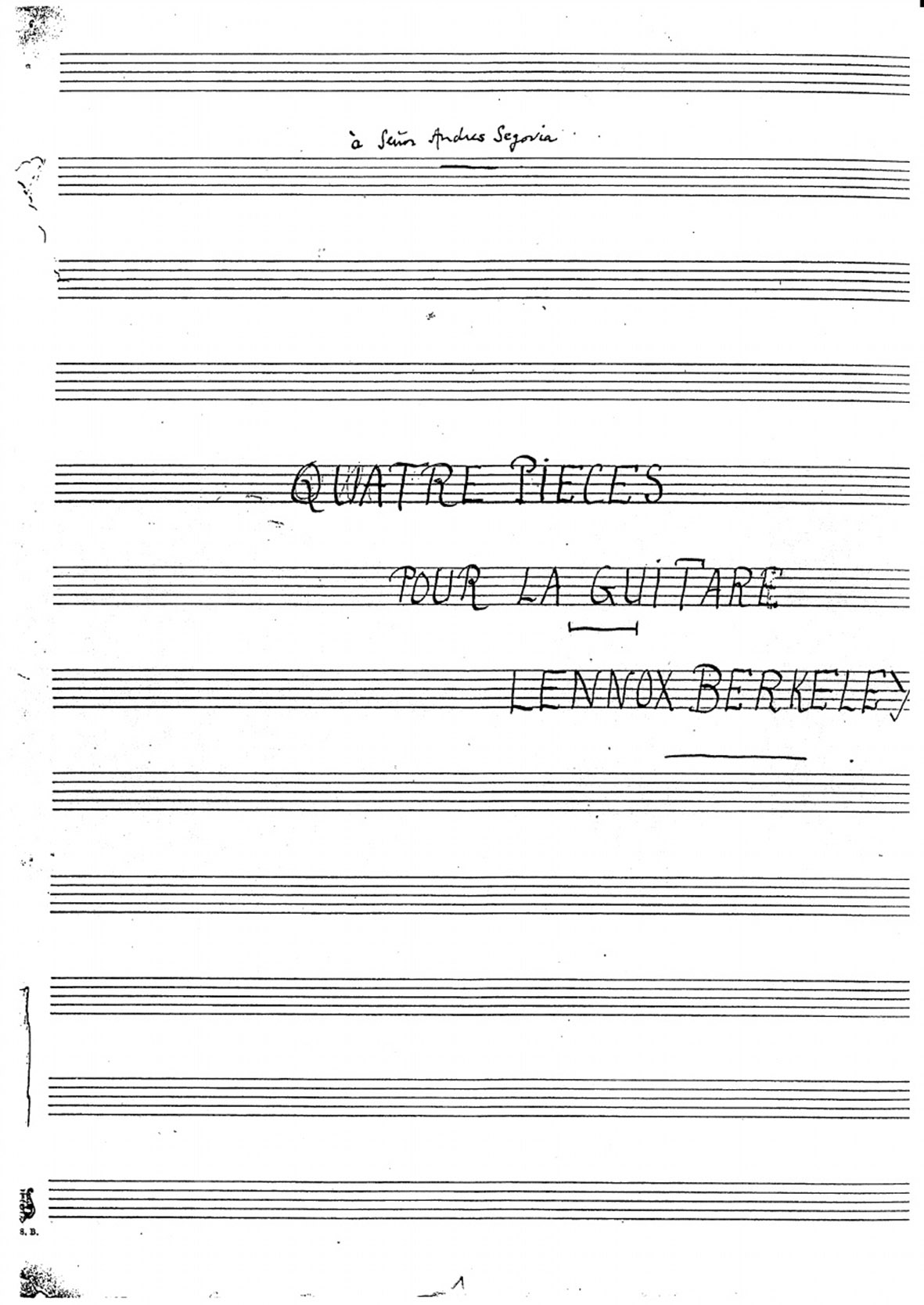Lennox Berkeley’s ‘Quatre pièces for Guitar’
Guitarist Emmanuel Sowicz discusses Berkeley’s ‘Quatre pièces’ with Sidney Buckland.
Sitting in the audience listening to Emmanuel Sowicz playing his final guitar recital for his MA at the Royal Academy of Music on 1 June last year, it struck me that there was an unusual rapport between this young performer and one of the compositions in particular that he had chosen to play, Lennox Berkeley’s Quatre pièces pour la guitare. What was it in Berkeley’s composition that evoked such sympathetic resonances in this young man? I interviewed Emmanuel in the hope of discovering what this music meant to him personally, and I began by asking him to tell me a little about his background and his first encounter with the guitar.

He was born in London in 1992 of a British father and a Chilean mother. When he was six he moved with his mother to Chile where he spent the rest of his formative years, enjoying annual visits from his father who remained in close contact, later arranging trips for the two of them in Europe and particularly in Spain. I wondered whether the trips to Spain had been influential in attracting him to the guitar in the first place but it seems that there was an earlier, more potent influence at home in the form of a classical guitar, bought for his older sister but never really used until, says Emmanuel, he himself ‘became old enough to lay it on its side and to ride it as a toy horse!’
Fortunately he was later to put this guitar to better use, first at his local conservatoire in Viña del Mar and eventually at the University of Chile in Santiago, from where he graduated in 2014. He then moved to London to study with Michael Lewin at the RAM, completing his Master’s degree with distinction, the Dip.RAM award for an ‘outstanding final recital’ and the Regency Award for ‘notable achievement’ during his studies. He has currently embarked on the Advanced Diploma at the RAM.
Sidney Buckland: Had you encountered Lennox Berkeley’s music before coming from Chile to the UK?
Emmanuel Sowicz: I was only aware of Berkeley’s Sonatina which I had come to know as a key piece of Julian Bream’s repertoire. However, on one of my last visits to London before moving here, I bought a CD by Graham Anthony Devine, British Guitar Music, which included Berkeley’s Quatre pièces pour la guitare along with the Theme and Variations, Op.77 and the Sonatina.
What first aroused your interest in performing Berkeley’s music?
Being half British, I thought I should learn a significant piece of English repertoire. I was keen on going beyond the more obvious choices such as Britten and Walton, however wonderful they are. Then, through conversations with you during my first years in London, came the discovery of the Lennox Berkeley Society. That there was a whole Society devoted to furthering the works of this remarkable composer certainly played a large part in arousing my interest in him.
Of all Berkeley’s works for guitar what made you choose to perform Quatre pièces?
After hearing the pieces on Graham Devine’s recording, the most powerful encouragement to play them came from meeting Julian Berkeley and Tony Scotland at a lunch in early 2016, to which you kindly invited me. I had the pleasure of playing a little music to them, after which they generously gave me as a gift a copy of Quatre pièces. I started playing this work very shortly after and included it in a recital in Chile where, despite being the most obscure work on the programme, it was by far the most successful. After the concert, quite a few members of the audience came to ask me about it and to tell me how much they had liked it. Early in 2017 I performed it in the Lennox Berkeley Guitar Award class organised by Christopher Daly as part of the Oxford Music Festival. I was most grateful for Christopher’s kind review of the class on the Lennox Berkeley website.

You seem to enjoy playing these four pieces very much. Would you say this is an accurate assessment on my part?
Very much so! There are many reasons for this, apart from the music itself being so appealing. The fact that these four pieces, composed in 1927-1928, were only discovered and published in 2001, is very exciting for me. One of the best things for a performer is to find good music that is not often played. It’s always a wonderful opportunity. Then there is the added mystery of the work having been written for Segovia but never performed by him. I am also fascinated to discover that certain elements in Berkeley’s Sonatina can be traced back to these four pieces, and that they could potentially rival Cyril Scott’s Sonatina (written in June 1927) as the first British composition for guitar to be written by a non-guitarist in the 20th century. There is another very personal element that has made Quatre pièces particularly special for me: Berkeley would have been about the age I am now when he wrote this composition, during his time studying with Nadia Boulanger in Paris. I find this notion very romantic!
Would you say that the four pieces form a unified whole, or do you think that each one has a clear and separate identity?
Each of the Quatre pièces has a very distinct character for me. Looking for a sense of unity proves to be somewhat of a challenge, as I believe their strength is in their variety. They all inhabit remarkably diverse sound worlds, and this is something I’ve been enjoying more and more as I get to perform them increasingly. The first, for instance, is a very extrovert and rhythmic piece of music, contrasted by a most beautiful melodic central section – a great start to the set. The more diffuse second piece roams into an ethereal realm, punctuated by some earthy Spanish moments. The introspection of the third piece, which is Berkeley at his poignant, reflective best, then gives way to a rousing toccata of sorts for the fourth piece. In this last piece there are very clear traces of the jazz and popular music that Berkeley would have been exposed to in Paris at the time. I remember a lesson with Fabio Zanon in which he pointed out some boogie-woogie moments which I found rather amusing at first. In fact this actually imbues the last piece of the four with a more playful, characterful air than if played straight through in a sort of moto perpetuo fashion.
Is there one of the four that you personally relate to more instinctively than the others?
That would certainly be the third one! Constructed as a Sarabande, this piece is a curiously effective mixture of baroque inspiration that also seems to draw on English renaissance lute music with its beautifully crafted divisions, enhanced by Berkeley’s characteristic use of harmony. The light and flowing diminutions give this third piece a sense of broad stillness and contemplation which I have always felt particularly drawn to. It is this lightness of texture in Berkeley’s guitar music, its beautiful lyricism within such diverse and rich sound worlds, that attracts me more and more to his music.